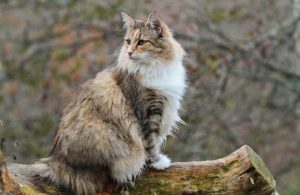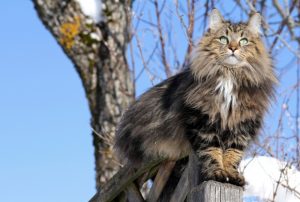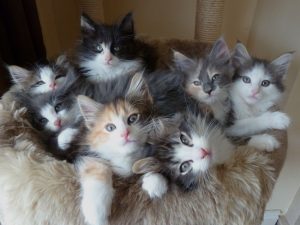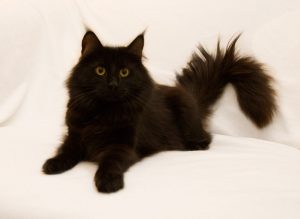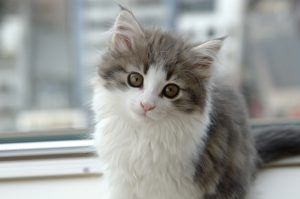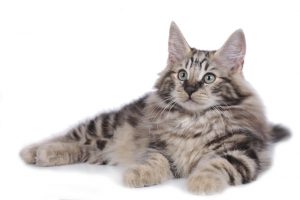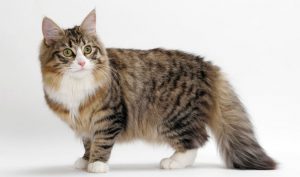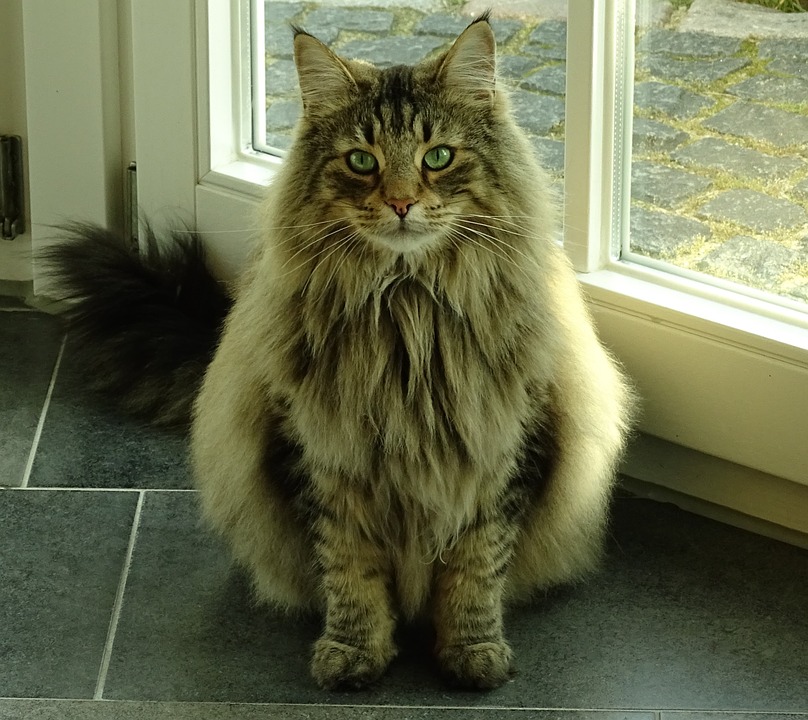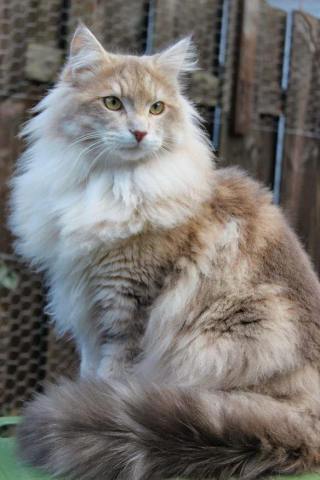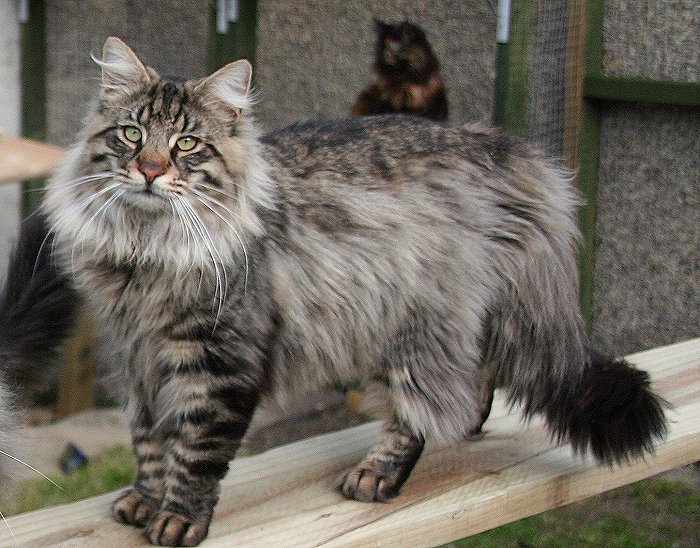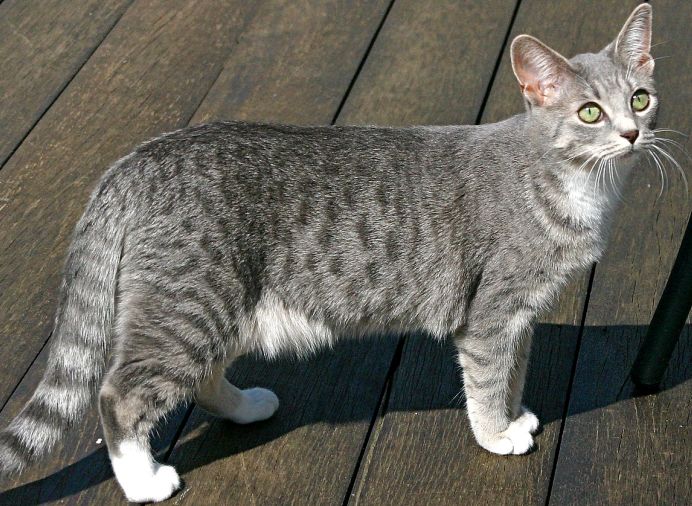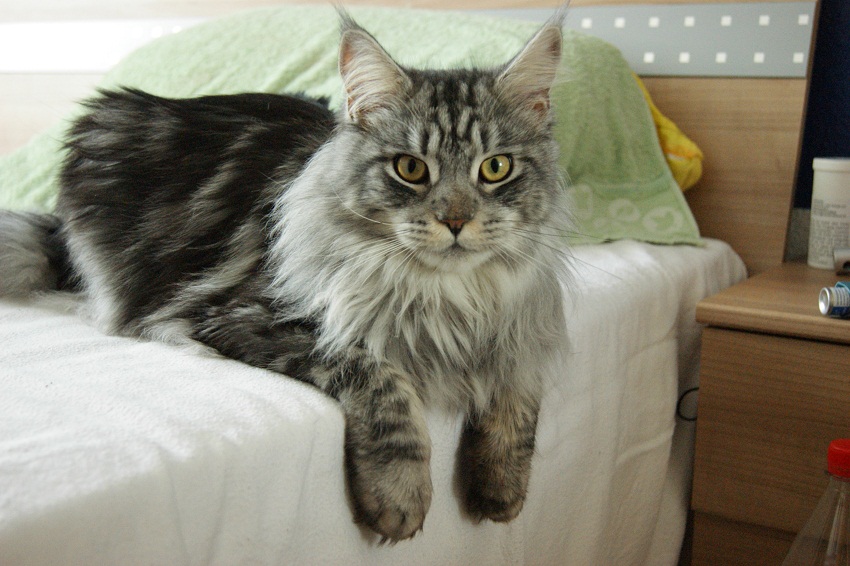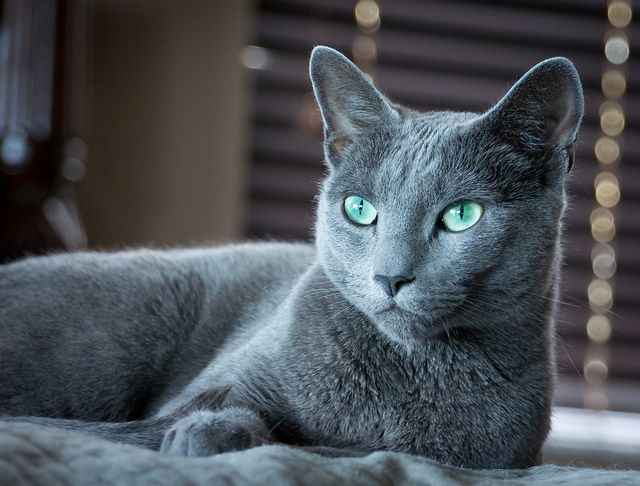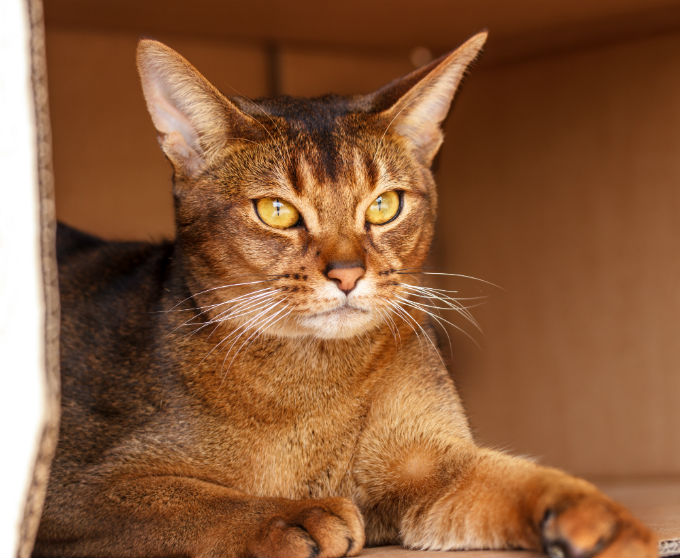Norwegian Forest Cat
Kind-hearted, affectionate, gentle — the Norwegian cat or skogkatt translating to forest cat, a native of Norway, is a beauty in itself. Big, strong and sturdy, these cats make for a perfect companion one could ask for.
Quick Information
Physical Appearance & Size
| Body Type: | Big |
| Physical Appearance: | Sturdy built; long, triangular-shaped head; medium-sized muzzle; large, glowy, expressive eyes with the outside of it being tilted to the base of its ears; short neck; long well-muscled legs and a bushy tail |
| How much does it Weigh (Average Size of a Full Grown Cat): | Males: 12 to 17 pounds; Females: 9 to 12 pounds |
Colors & Patterns
| Coat Type: | Double coat: Top coat– Thick, glossy, long, water repellant; Undercoat: Woolly |
| Color: | In every color whether it be pure white or coal black, except lilac, chocolate, and lavender |
| Eye Color: | Gold, green, golden-green, copper or even blue or odd-eyed (for white cats only) |
| Pattern: | In all possible patterns excepting colorpoint |
Other Characteristics
| Other Names: | Norsk skogkatt, Norsk granskogskatte, Norsk skaukatt |
| Average Lifespan/How Long do they Live: | 14 to 16 years |
| Litter Size: | 4 on an average |
| Behavioral Characteristics: | Curious, intelligent, sober, gentle, affectionate |
| Lap Cat: | No |
| Shedding ( Do they Shed): | Moderately low |
| Vocalization: | Mostly quiet, communicating with a soothing chirp or trill when it needs a certain thing |
| Good with Children: | Yes |
| Is it Hypoallergenic: | No |
| Country (Where do they come from): | Norway |
| Competitive Registration/ Qualification: | CFA, TICA, FIFe, AACE, ACFA/CAA, ACF, CCA-AFC |
History
The Norwegian Forest Cat originating eons back has a long and eventful history which is perhaps 1000 of years old. Their ancestors are thought to be the short and long-haired cats which were brought by the Vikings and Crusaders respectively when they came to Norway. According to Norse legends, this breed was described as fairy cats, gifted with an innate ability to climb rocks. The original breeds dwelt in the forests of Norway since long when farmers acknowledged their hunting skills and put them to use on farms.
Eventually, they came to be recognized by cat fanciers with the Norwegian Forest Cat Club formed in the year 1938. However, the onset of the Second World War hampered the development of this breed, putting them on the verge of extinction. The Norwegian Forest Cat Club saved them from perishing by officially initiating a breeding programme. It remained in its place of origin till the 1970s, and with the efforts of Carl-Fredrik Nordane, a cat fancier of Norway, the breed was registered by the FIFe. Its popularity spread to other parts of the world with Sweden recognizing it in 1978, whereas Britain’s Norwegian Cat Club acknowledged it in 1989. In America, it was registered by the ACFA in 1994.
Physical Built to Cope with its Surroundings
The Norwegian Cat has unique physical features which wonderfully helps it to shield itself from the low temperatures in the place where it originated (Norway).
Coat: Water resistant outer coat and warm undercoat give it protection from excessive moisture and cold air.
Ears: Thick, tufted, moderately large and low set, preventing excessive loss of heat.
Feet: Has heavy tufts of hair which gives the feet a protective layer when the cat is walking on the cold snow.
Legs: Rear legs have a heavy bone structure and a muscular built, being longer than the front legs. This along with thick claws on all its four feet makes it easy for it to climb perches especially when it is roaming around in the forest.
Temperament and Personality
- Being a perfect housecat, it enjoys being along with its people. It may not always crave for your affection except mealtimes but will follow you wherever you go.
- Displaying an amiable nature, they are amicable to guests who visit their house and also share an excellent rapport with kids as well as other pets.
- Having an athletic body, he is an agile climber that can mostly be attributed to its strong claws, loving to get onto the top of a big cat tree, but being obedient enough to descend whenever instructed.
- Owing to its waterproof coat and farming descent, it possesses an undying love for catching fish, and may not be too safe or homes with large aquariums.
- Loving to be petted, the Wegie may not be an out and out lap cat but enjoys a pat on its ears or beneath its chin, reciprocating by rubbing its head or cheek on your hand or shoulder.
Who is the Norwegian Forest cat good for
- Those who desire for a cat who is friendly and loving but not clingy.
- Families on the lookout for a pet that has a beautiful, elegant appearance, teamed with a courteous disposition.
Care
Since they have a semi-long coat which is waterproof, they do not need too much of grooming but for a weekly brushing and combing, to prevent their coats from getting matted and tangled. Nail trimming, wiping its eyes and ears, as well as brushing its teeth are the other hygiene measures one should follow for maintaining a healthy cat.
Some of the known health conditions this breed is said to suffer from include hip dysplasia, hypertrophic cardiomyopathy, polycystic kidney disease, and glycogen storage disease IV.
Training
Intelligent and curious, the Wegies are a delight to train. You can teach them a lot of impressive tricks, particularly if you desire to take them to cat shows. To train them to do tricks, the first thing you need to teach is your cat is to sit. Hold its favorite goodie above his head, behind its ears. Gradually move the treat and take it near its tail. IN the pursuit of getting it your cat would lift up its hips and attempt to sit. Simultaneously repeat the word “sit” to help him relate both the actions. Doing this on a routine would help your cat sit well in no time.
Feeding
These big cats need to be fed well to maintain good health. Hence you need to provide them good quality cat food in measured amounts.

